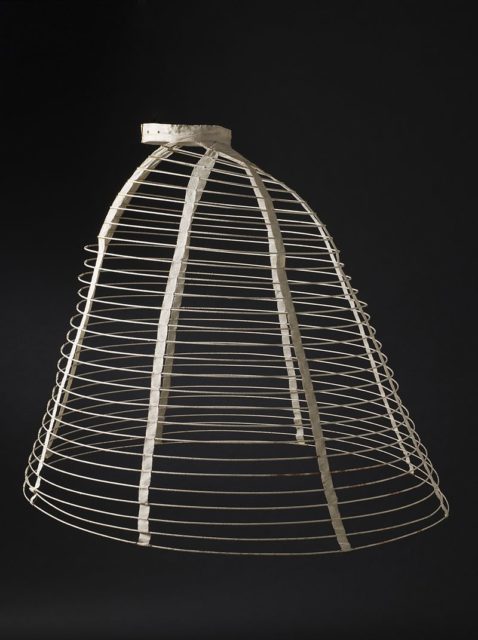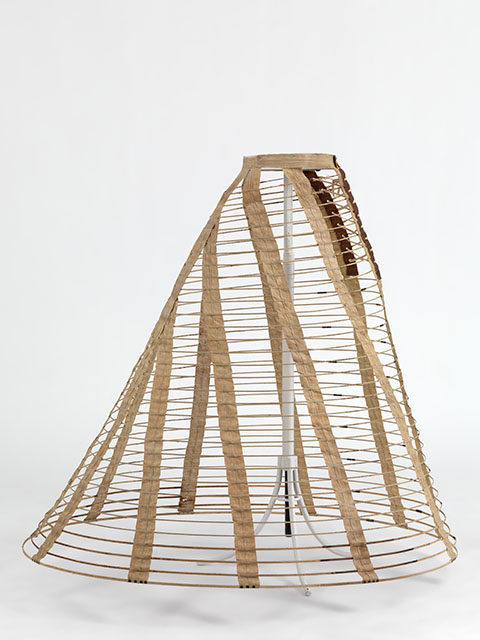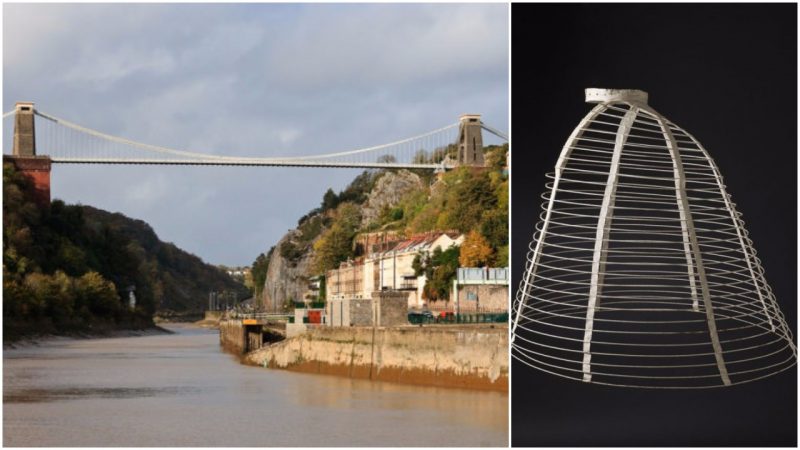This is not our first time writing about the crinoline, the Victorian-era structured petticoat, but it’s the first time it has filled the role of hero rather than villain. It’s been estimated that 3,000 women died after their hooped skirts caught fire in tragic accidents in the 19th century.
But this is a story about a barmaid, Sarah Ann Henley, a crinoline that saved her life, and a cabman who couldn’t care less if she lived or died.
After learning through a letter that her soon-to-be husband had made a decision to break their engagement, 22-year-old Sarah walked what was probably her longest mile. Determined to end her life, she threw herself off the Clifton Suspension Bridge in the Easton area of Bristol.

Her relationship with her fiancé had been a rocky one, full of quarrels, and one of their squabbles made her storm into her fiancé’s workplace at the Great Western Railway and belittle him in front of everyone, including his boss. She was a young, charming, and single woman living with her father in their humble home on 48 Twinnell Road, St. Phillips, and yet she made her feelings known.
For Sarah, however, things didn’t go as she had expected, as it seems her fiancé had clearly had enough. He sent a letter informing her that their engagement was off and she was now free to pursue anyone she pleased.

Shocked and devastated, on May 8, 1885, at 12:15 AM, Sarah climbed over the fence and, before she could be stopped by any passersby, threw herself from the Suspension Bridge. She would have been the 18th person to end their life this way.
“The occurrence was witnessed by several people, including James Ball of 43 Egerton Road, Bishopston; James Lang Vesey of 14 Greenway Road, Redland; and Detective Sergeant Robertson of the Bristol Police Force, the latter of whom was near Cumberland Basin at the time, read the official report of Thomas Stevens, the man in charge as chief controller of the Clifton Bridge. What occurred then was something of a miracle.
It was what she wore that night that saved her life. Sarah’s crinoline swelled with air rushing underneath, creating a parachute under her wide dress, and she fell to the ground as slowly as a leaf. What’s more, it was a windy day that spring, so luckily for her, the wind sent her away from the Avon River, and she landed on the thick, muddy banks almost like Mary Poppins.
Well, almost, for as witness reports clearly state, she sank deep into the mud. Three men, including Detective Sergeant Robertson, saw what happened and raced down to see if she was alive and to assist if need be. Fortunately, she was alive and conscious, yet when they pulled her out of the mud, it was clear she was in shock and needed to go to a hospital.

The detective rushed for help, and as it happened a cab was just passing by. The cabman, however, was reluctant to take the poor woman and drive her to the Bristol Infirmary, because he said he didn’t want her muddy clothes to dirty his cab. Nothing could persuade the cabby otherwise, not even the money Detective Robertson offered to him, nor the plea that she would probably die if he didn’t. He responded rudely, “I don’t care–let her die,” and drove away.
Young Sarah didn’t die that day. Carried on a stretcher to the hospital, where she was reexamined, she had not one broken bone. Moreover, she lived for another 63 years, long enough to tell the tale many times of how she survived thanks to her crinoline.
As for the cab driver, later on, when the story spread, he wrote a letter to the public in which he claimed that cab drivers were forbidden to take anyone dirty, intoxicated, or covered in blood, otherwise the vehicle would be declared unfit for months. He said if he hadn’t shunned her, his family would starve.
Perhaps this poem says it best:
Once in Victoria’s golden age
When crinolines were all the rage
A dame in fashionable attire
Would change her life for one up higher
So, up to Clifton Bridge she went
And made a parachute descent
But though, ’twas not the lady’s wish
A boatman hooked her like a fish
And thus a slave to fashion’s laws
Was snatched from out of Death’s hungry jaws
This story’s true I’d have you know
And thus it only goes to show
William E. Heasell – An Early Parachute Descent in Bristol
